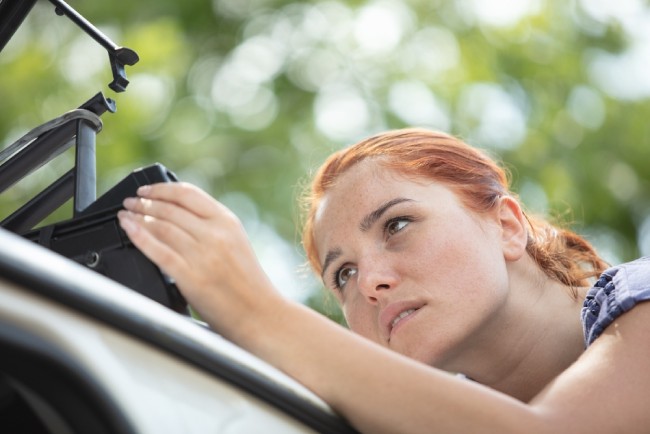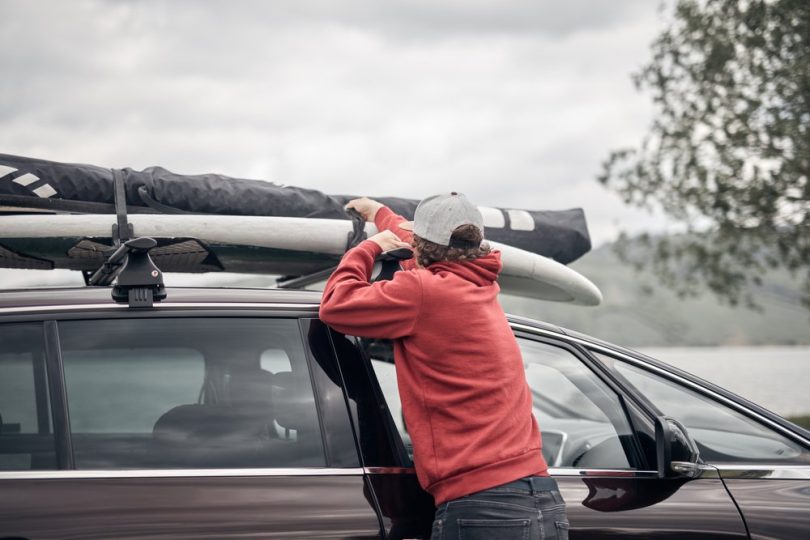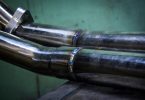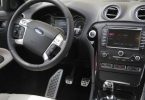Roof racks are a great addition to your car, especially when you need to transport large stuff. But this convenient accessory turns into a big-time troublemaker when you hit 80 km and it starts to sound like a jet landing on the roof!
You don’t really need to feel let down and take it off completely because there are several solutions to make your life a little easier. Let’s see which one works for you!
How to Stop Roof Rack Wind Noise?

1. Wind fairing
Wind fairings – also known as wind deflectors or wind diffusers – can be added to a roof rack to help reduce wind noise by directing the airflow around the rack. They are usually made of plastic or a lightweight metal and attached to the front and the sides of the rack.
Here’s how to install wind fairings:
- Clean the roof rack and the area where the wind fairings will be attached
- Position the fairings on the rack, making sure they are level and aligned with the direction of the car’s movement
- Use the hardware provided with the package to secure them to the roof rack.
- Once installed, test drive the vehicle to ensure the wind noise has been reduced
It’s important to note that installing wind fairings may not completely eliminate wind noise, but it will help reduce it significantly.
Wind fairings also have other benefits as well, such as improved fuel economy, less dragging, and a stylish look.
2. Wrap pads
Wrapping the crossbars of a car roof rack in pads is another way to reduce wind noise. Here are the steps to do so:
- Purchase padded wraps specifically designed for your car roof racks
- Clean the crossbars of your roof rack thoroughly to ensure proper adhesion
- Unroll the padded wrap and stretch it over the crossbar
- Secure the padded wrap to the crossbar using the adhesive backing or the straps provided
- Repeat the process on the other crossbar
The padded wraps act as a barrier while the padding helps absorb the wind noise caused by the crossbars. When you use padded wraps, make sure they are tight and secure, so they don’t come loose while driving.
They also keep the crossbars safe and protected from the external environment but they are not resistant to UV rays and extreme weather, so they may have to be replaced over time.
3. Aero bars
Aerodynamic roof racks – also called low-profile or flush-mount roof racks – are designed to minimize wind resistance and reduce wind noise when driving. They are typically made of lightweight materials such as aluminum, and are shaped to be as streamlined as possible to reduce the amount of wind caught by the roof rack.
An aerodynamic roof rack is designed to reduce the drag caused by a traditional roof rack, which can improve fuel efficiency and minimize wind noise. They are often flush-mounted to the roof of the vehicle, reducing the surface area that can catch the wind. They are also lower profile than traditional roof racks, which also helps to reduce drag.
Some aerodynamic bars can also be used with specific roof rack accessories, such as bike or kayak holders, cargo baskets, and roof top tents.
However, they are not meant to replace the traditional roof rack and may not be suitable for all types of gear. It’s always best to check the manufacturer’s recommendations and weight capacity before installing any roof rack on your vehicle.
4. Paracord rack/grab handles
Paracords can be an effective way to reduce wind noise. They act as a barrier, and the tightness of the cords help absorb the wind noise caused by the crossbars.
Always use high-quality and strong paracords. It’s also a good idea to try them with other methods for better results.
Here’s how to install them:
Wrap the cord twice around the front crossbar in a curved pattern twice and tighten the overhand knots at a 45° angle. We recommend that you use a ¼ inch cord since this will suit this method best.
5. Aerofoil bars
The relatively new aerofoil crossbars are a big improvement to tackle the noisy roof rack issue. They are easy to install and minimize wind noise significantly. But the best part is they are also known to decrease fuel consumption significantly.
6. Bar Padding
There are two types of bar padding – load bars and edge bars.
Load bars are square in shape, wide, and heavy since they are designed to carry large and heavy objects. But they tend to be a little noisy and you have to use crossbar pads and wind fairings with load bars so you don’t have the same issue.
On the other hand, edge bars are oval or circular shaped that are aerodynamically designed to divert the airflow so less noise is generated. But one thing to keep in mind is that they can’t carry too much weight due to being smaller.
7. Tightening your roof racks down
Adding accessories is a great way to reduce wind noise, but that’s not always necessary. Perhaps there’s a gap in the rubber seal or foot of the rack.
Check the bottom rubber seal, upper rubber seal, end caps, plastic slide trips, nuts and bolts to see if they are tightened properly.
8. Change your traveling speed
If all the other options fail, you need to play with the air flow as a last resort, which causes wind noise. Change the speed of your car by 3 MPH (up or down) and look for any changes in the noise level.
However, the noise level may vary even when you’re driving at a constant speed.
Additionally, driving on smoother roads and avoiding sudden acceleration or braking can also help minimize noise.
What Causes Roof Rack Wind Noise on a Car?
This is caused by wind flowing over the racks and creating a turbulent air flow. This generates pressure differences on the surface of the racks, resulting in the disturbing whistling or humming noise that can’t be controlled even by turning up the radio.
Here are the possible reasons behind this headache for you:
- Improper mounting of the roof rack
- Loose or damaged components
- Poor aerodynamics of the design
- Driving at high speeds
- Car or roof rack being too tall or boxy
Wrapping it up
The key to stopping the noise is to divert the air flow. All of these are great ways and you can combine two or more methods to counteract this issue the most efficient way.
Aerodynamic crossbars work best but they are pretty expensive. If you can afford them, get them soon. If you can’t, the other relatively inexpensive options will also work for you to some degree.
Now that you know how to stop roof rack wind noise, it’s your time to make the call!
FAQs
1. Can high winds bend or damage my roof racks?
The wind itself isn’t a matter of concern but the items attached to or mounted on the racks may do the damage in high winds when you’re speeding up.
Things carried by a roof rack may cause damage if struck by strong winds but an empty roof rack won’t be damaged by high winds when driving at a high speed.
2. How does a roof rack affect my car’s performance?
Ans: Your car itself is designed aerodynamically and adding anything outside is going to have a bad effect; i.e., reduced fuel economy due to the more power requirement by the engine in this case.
But the good news is some of these accessories also have an aerodynamic profile.










Leave a Comment